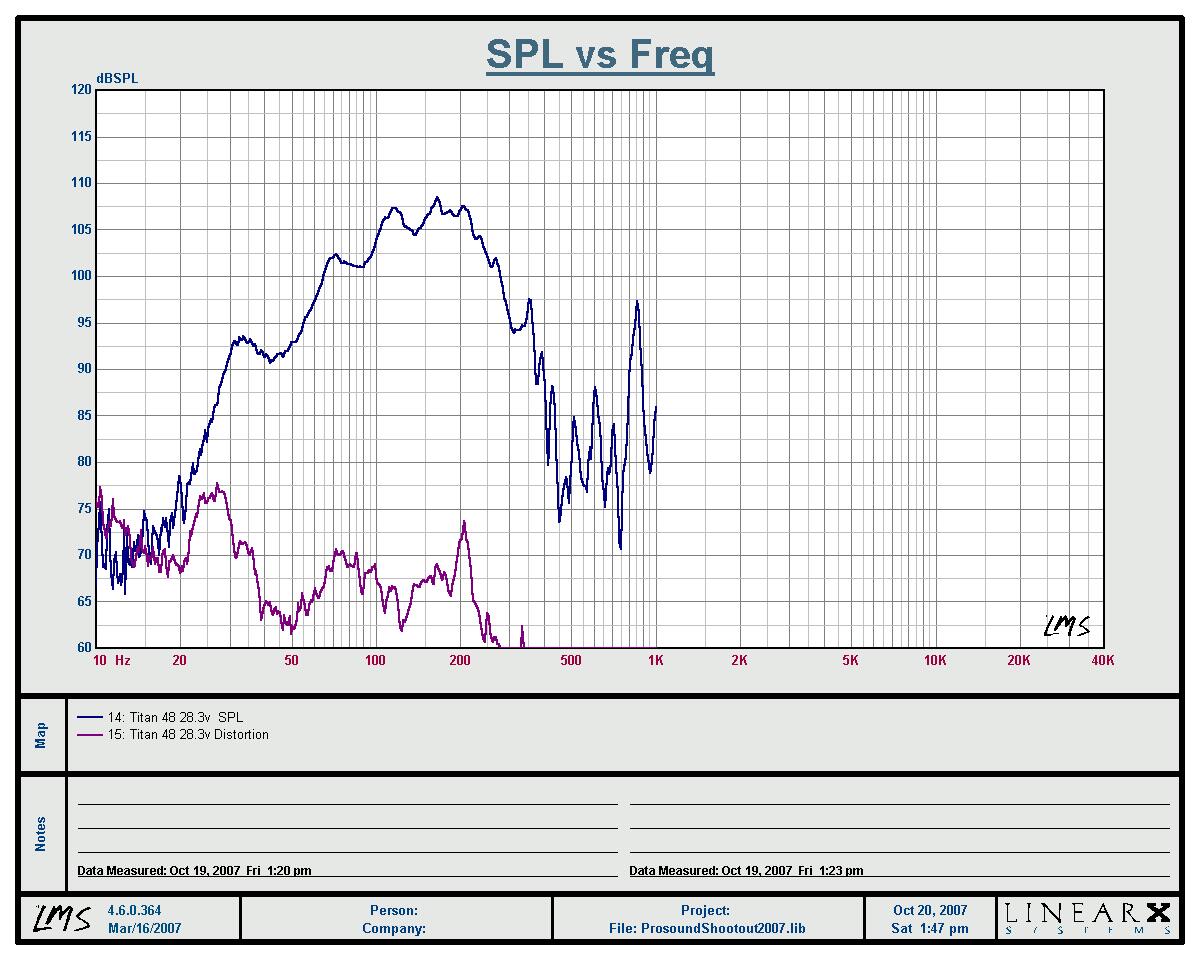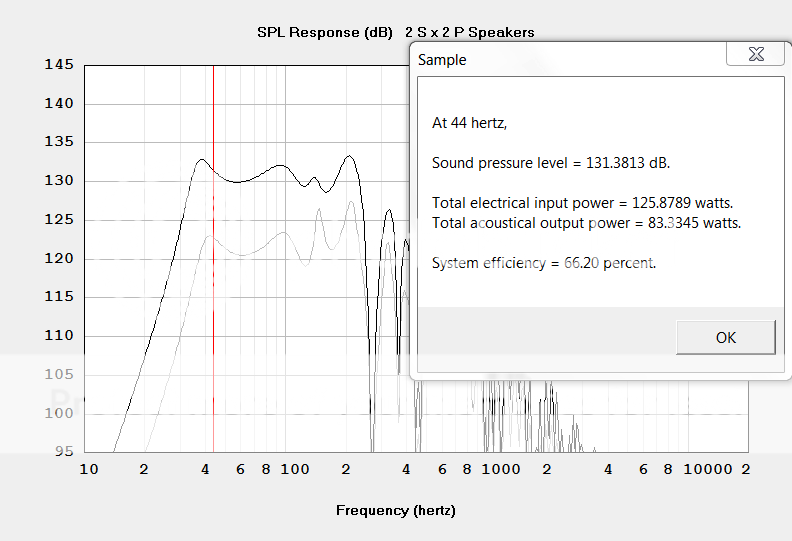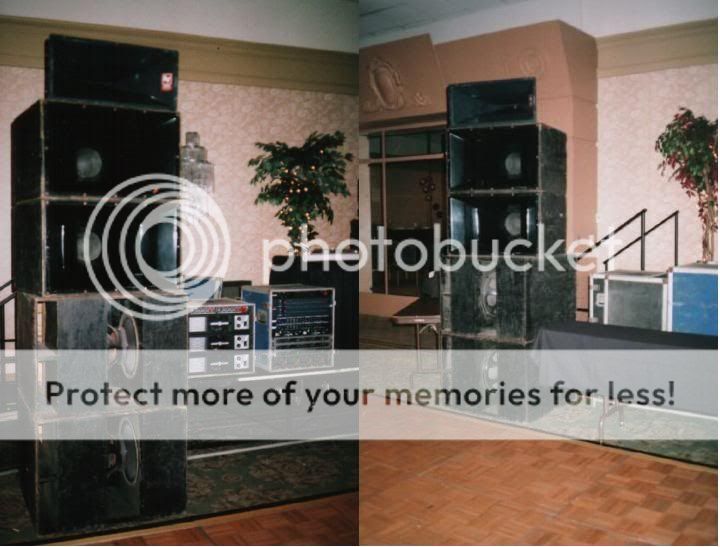"Is the measurement in room, or does the ripple come from a too small mouth? Anyway... it looks like the official measurement is rather optimistic about its performance."
10M groundplane, ripple is too small of a mouth (will improve with 4x or more cabinets). With too small of a mouth the output frequently has less output in the dips than the same driver would have as a direct radiator.
Fig.5.10 shows imaginary impedance dropping below zero on a small mouth, those are the dips. 5.10E shows you can have too much mouth, and lose deep bass. 5.10 will allow you to determine how many cabinets (mouth area) are (is) optimum.
" i think you said on a different forum something about which fs is ideal for a tapped horn tuning and came up with a pretty exact number for it. Could i ask for a short explanation of it? (Dont want to steal the thread though). "
I look for Fs about a half octave above the Fc point desired, seems to work better that way.
"how's the distortion scale read on that LMS display and at what voltage was it taken?"
28.3V/10M groundplane, distortion is in dB below the main output (-30dB~3%, -40dB=1%)
10M groundplane, ripple is too small of a mouth (will improve with 4x or more cabinets). With too small of a mouth the output frequently has less output in the dips than the same driver would have as a direct radiator.
An externally hosted image should be here but it was not working when we last tested it.
Fig.5.10 shows imaginary impedance dropping below zero on a small mouth, those are the dips. 5.10E shows you can have too much mouth, and lose deep bass. 5.10 will allow you to determine how many cabinets (mouth area) are (is) optimum.
" i think you said on a different forum something about which fs is ideal for a tapped horn tuning and came up with a pretty exact number for it. Could i ask for a short explanation of it? (Dont want to steal the thread though). "
I look for Fs about a half octave above the Fc point desired, seems to work better that way.
"how's the distortion scale read on that LMS display and at what voltage was it taken?"
28.3V/10M groundplane, distortion is in dB below the main output (-30dB~3%, -40dB=1%)
Last edited:
does that mean I can cheat with coupler whose F10 half space is around 50Hz and its 50Hz/30vrms harmonics are 34dB down from the fundamental to call it "44dB" down?
fwiw it's a good deal cleaner than my Yorkville UCS1 for 1 sheet of plywood and
and old Eminence 18 - that horrid dip needs either a front board like K15 or a bit less baffle angle to look better
20vrms
re:BFM - seems like when Tuba24 it made its debut there was something about no distortion at 20Hz -?
An externally hosted image should be here but it was not working when we last tested it.
fwiw it's a good deal cleaner than my Yorkville UCS1 for 1 sheet of plywood and
and old Eminence 18 - that horrid dip needs either a front board like K15 or a bit less baffle angle to look better
20vrms
An externally hosted image should be here but it was not working when we last tested it.
re:BFM - seems like when Tuba24 it made its debut there was something about no distortion at 20Hz -?
Last edited:
Is there any bass horn out there better than the lab horn
Yes, many of the TH designs from Danley would better it.plays louder and goes deeper
However, a pair corner loaded in my old house with my big FLH system was a hell of a lot of fun. This was the best I could find when I built them (when they came out)
Six Labsubs are 50% efficient, and 6th order bandpass speakers (Tapped Horns) are no more than 2% efficient.
Tapped Horns do have several advantages, but efficiency isn't one of them!
Read Danley's white paper ... http://danleysoundlabs.com/pdf/danley_tapped.pdf
Tapped Horns do have several advantages, but efficiency isn't one of them!
Read Danley's white paper ... http://danleysoundlabs.com/pdf/danley_tapped.pdf
Last edited:
Tapped Horns do have several advantages, but efficiency isn't one of them!
Not sure how you concluded that. http://www.diyaudio.com/forums/subwoofers/154745-mutual-coupling-tapped-horns.html#post1976439
Actual measurement of BFM cabinet:

vs claims:
An externally hosted image should be here but it was not working when we last tested it.
djk, It looks like you're trying to say that BFM is being misleading and I don't think this is really the case. Does Bill mention how his measurements were acquired? Do we know how these two measurements were taken?
These two measurements look very close to each other to me.
Hi Davy,
People were comparing one LabSub to one Tapped horn, which I think is bogus. If you look at Danley's whitepaper, it compares a tapped horn to a vented box. At the same power, they have the same output, which means the same efficiency. However, the Tapped horn driver has less excursion, and can be pushed to higher output. More power ... more output, but NOT more efficiency.
While a close stack of almost anything will gain in efficiency, I don't believe it's practical to stack Tapped Horns to get anywhere near 50% efficiency.
Am I wrong?
People were comparing one LabSub to one Tapped horn, which I think is bogus. If you look at Danley's whitepaper, it compares a tapped horn to a vented box. At the same power, they have the same output, which means the same efficiency. However, the Tapped horn driver has less excursion, and can be pushed to higher output. More power ... more output, but NOT more efficiency.
While a close stack of almost anything will gain in efficiency, I don't believe it's practical to stack Tapped Horns to get anywhere near 50% efficiency.
Am I wrong?
Am I wrong?
Yes, see Danley's graph I posted. He hits 50% with 4 TH-115 cabs. What multiple TH cabs don't do is to drop their cutoff point when in a pack.
These two measurements look very close to each other to me.
Me too. The LMS plot was done with a Titan48 that had the extended frequency throat mod. So the two cabs are different.
Me too. The LMS plot was done with a Titan48 that had the extended frequency throat mod. So the two cabs are different.
Thanks for that added info davygrvy. There is definitely a difference between the two plots but not as significant as it would first appear. To better illustrate this I've cropped and combined the two graphs to approximate the x & y scales.
Attachments
The thing behind this is the following. In order to get 3 dB more out of a loudspeaker, you need to double the power input. However, two coincident sound sources of similar strength combine to produce 6 dB more as compared to a single one. So, that is 3 dB more for the same increase in wattage. In other words, efficiency doubles. For another doubling in efficiency, you need to double the number of speakers again, so you need four. Start with a 5 % efficient speaker, and a combination of two will be 10%, four 20% and eight 40% efficient. This is only theoretically possible.
'Coincident' requires not only that the sound sources are aligned in time, but also that they emanate from the same point in space. Since this is not possible with real speakers, this latter requirement can only be approximated for wavelengths that are large compared to the size of the stack.
'Coincident' requires not only that the sound sources are aligned in time, but also that they emanate from the same point in space. Since this is not possible with real speakers, this latter requirement can only be approximated for wavelengths that are large compared to the size of the stack.
Box per box?So is there any bass horn that can go up against the lab horn. Box per box
No size restrictions?
A bigger FLH box plays louder, the 12Pi is 32.8 cubic feet and can do 131dB at 35 Hz using the same Lab 12 drivers it will be slightly louder than the smaller 26.4 cube Labsub.
Relax your size restrictions even more, and a 100 cubic foot horn driven by just two Lab 12s will get flat response from 38-100Hz at 140dB without exceeding Xmax!
As far as output per driver, FLH generally are the winner, TH are a close second, BP, third, BR forth.
As far as output per enclosed space, the order reverses, so if the question is "how much SPL output can fit in X space", rather than "how much SPL output is possible from driver X", the answer is different.
That said, by relaxing LF requirements by 5 Hz, yesterday messing with Hornresp found one can get 126 dB at 40 Hz rising to 129 dB at 100Hz from a single Lab 12 in a small (7.76 cubic foot) FLH box.
When the conversion from dual BR to single FLH is done, I'll post the results.
This box is smaller than the SS15, nearly as loud, goes way lower, and uses a speaker that costs less.
Will be laying it out later today, it should only use close to one 4x8 foot sheet of plywood.
Art Welter
- Status
- This old topic is closed. If you want to reopen this topic, contact a moderator using the "Report Post" button.
- Home
- Loudspeakers
- Subwoofers
- is lab horn the best




